Chicken wings have been a beloved dish for many years, celebrated for their delicious taste and versatility at social gatherings, sports events, or even casual dinners. Traditionally, these wings have been deep-fried until their skin is crispy and golden, but this method also adds extra calories and fat. In recent years, the air fryer has emerged as a popular appliance that offers a healthier alternative while still delivering the crispiness and flavor that fans love.
This guide is dedicated to helping you master air fryer chicken wings. We will explore the evolution of the dish, explain why air frying is an excellent method, provide step-by-step instructions, and share a variety of creative seasoning and sauce ideas. Additionally, we include nutritional information and troubleshooting advice to ensure every batch of wings you make is perfect. Whether you are a novice in the kitchen or a seasoned home chef, this article will equip you with all the knowledge you need to prepare mouthwatering, healthier wings using your air fryer.
The Evolution of Chicken Wings
A Historical Overview
Chicken wings have a storied past that can be traced back to regional specialties like Buffalo wings, which originated in Buffalo, New York. What began as a simple snack served in small bars has evolved into a staple at parties and gatherings across the country. The original wings were deep-fried and then coated in a spicy sauce, setting the standard for what many people expect from this dish.
As the popularity of chicken wings grew, so did the variations in preparation. Different regions introduced their own twists, whether through unique spice blends, different cooking methods, or the inclusion of various sauces. Today, air fryer chicken wings are gaining popularity as they offer a modern take on a classic recipe—providing the crispy exterior and tender interior of traditionally fried wings while using significantly less oil.
The Emergence of Air Fryers
Air fryers have transformed home cooking by providing an efficient and healthier alternative to deep frying. Instead of submerging food in oil, these appliances use rapidly circulating hot air to achieve a similar effect, which reduces the need for large amounts of oil. This not only helps cut calories but also results in a dish with a more natural flavor and less greasy finish.
Air fryer technology has made it possible to enjoy many traditionally fried foods in a way that fits better with a healthy lifestyle. Chicken wings, in particular, have benefited from this innovation, allowing fans to indulge in a favorite treat without compromising on health goals.
Why Choose Air Fryer Chicken Wings?
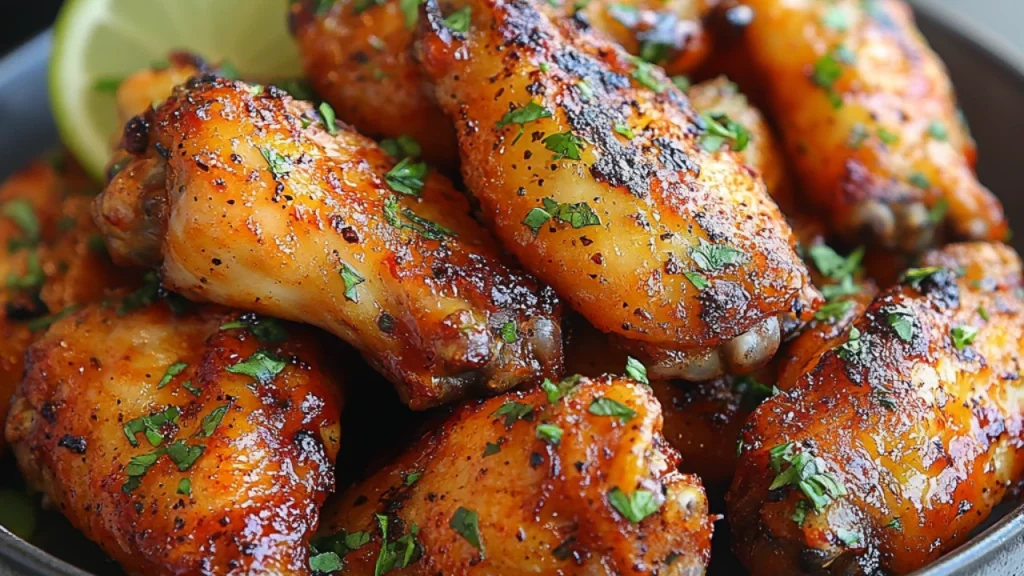
Health Advantages
One of the primary reasons people are turning to air fryer chicken wings is the significant reduction in oil and fat. Traditional deep-frying methods involve submerging the wings in oil, which increases their calorie count and fat content considerably. Air frying, on the other hand, requires only a light coating of oil, resulting in wings that are lower in calories yet still retain a satisfying crunch.
- Lower Calorie Count: With less oil absorbed during cooking, each wing has fewer calories, making it easier to include them in a balanced diet.
- Reduced Fat Content: By limiting the amount of oil used, the wings contain less unhealthy fat, which is beneficial for cardiovascular health.
- Preservation of Nutrients: The quicker cooking time in an air fryer helps to preserve more of the chicken’s natural nutrients compared to longer deep-frying methods.
Efficiency and Convenience
Air fryers are known for their user-friendly operation and rapid cooking times. Many people appreciate the appliance for its simplicity and versatility in the kitchen.
- Time-Saving: Air fryers can cook a batch of wings in roughly 20 minutes, which is significantly faster than many traditional methods.
- Easy Cleanup: Most air fryer components, such as baskets and trays, are nonstick and dishwasher-safe, which simplifies the cleaning process.
- Versatile Cooking: Besides chicken wings, air fryers can prepare a wide range of dishes, from vegetables and fish to even baked desserts, making them a valuable tool in any kitchen.
Flavor and Texture Benefits
There is often a concern that using less oil might compromise flavor or texture. However, air fryers have been proven to create wings with an excellent balance of a crispy outer layer and a juicy, tender interior. The secret lies in the design of the air fryer, which circulates hot air evenly around the food, promoting uniform browning without excessive oil.
When prepared with the right seasonings and techniques, air fryer chicken wings can match—and even exceed—the flavor profile of their deep-fried counterparts, providing a satisfying crunch and robust taste with less guilt.
Gathering the Essentials
Before you begin the cooking process, it is important to have all the necessary ingredients and equipment at hand. This ensures a smooth workflow and the best possible outcome for your dish.
Key Ingredients
- Chicken Wings: Opt for fresh or properly thawed chicken wings. You can use whole wings or separate them into drumettes and flats based on your preference.
- Oil: A minimal amount of oil is necessary to achieve a crispy finish. Choose a light oil such as olive oil or a specialized cooking spray.
- Seasonings: Basic seasonings include salt and pepper. To enhance flavor, consider adding garlic powder, paprika, cayenne pepper, onion powder, or dried herbs like thyme or oregano.
- Optional Sauces: Depending on your desired flavor profile, you might use sauces like Buffalo, barbecue, garlic parmesan, or a sweet and tangy glaze after cooking.
Necessary Equipment
- Air Fryer: Make sure your air fryer is appropriately sized to hold the wings in a single layer for optimal air circulation.
- Mixing Bowl: A large bowl is useful for tossing the wings with oil and seasonings.
- Tongs: These are essential for flipping the wings and handling them safely.
- Cooking Thermometer: To ensure the wings are cooked to a safe temperature (165°F or 74°C), a digital thermometer can be very helpful.
Step-by-Step Instructions for Air Fryer Chicken Wings
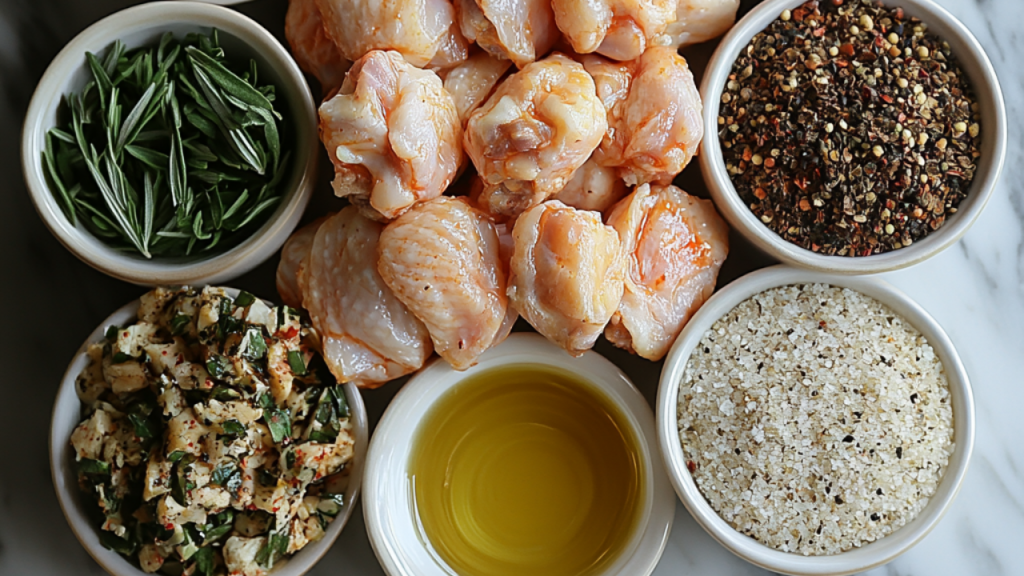
The following steps provide detailed instructions to help you prepare perfect air fryer chicken wings every time.
Step 1: Preparing the Wings
- Clean and Dry:
Rinse your chicken wings under cold water and use paper towels to pat them completely dry. Removing any moisture is crucial to achieving a crispy skin during cooking. - Seasoning:
Place the wings in a large mixing bowl. Lightly coat them with a drizzle of oil or a light spray of cooking oil. Season with salt, pepper, and your chosen spices. For a basic yet flavorful mix, try combining garlic powder, paprika, and a hint of cayenne pepper. Toss the wings well to ensure every piece is evenly seasoned.
Step 2: Preheating the Air Fryer
- Set Temperature:
Preheat your air fryer to 400°F (200°C). Preheating is an important step because it allows the wings to begin cooking immediately when placed in the basket, promoting even browning. - Prepare the Basket:
Lightly spray the basket with a nonstick cooking spray to prevent the wings from sticking. Arrange the wings in a single layer in the basket, ensuring there is sufficient space between each wing for the air to circulate properly.
Step 3: Cooking the Wings
- Initial Cook:
Insert the basket into the air fryer and cook for approximately 10 minutes. After this period, use tongs to carefully flip each wing to ensure that both sides will crisp up evenly. - Continue Cooking:
Return the basket to the air fryer and cook for an additional 8 to 10 minutes. The total cooking time should be around 18 to 20 minutes, though this may vary slightly depending on the size of the wings and the model of your air fryer. - Check for Doneness:
To confirm that the wings are thoroughly cooked, check their internal temperature with a cooking thermometer. They should reach at least 165°F (74°C). If you prefer a more intensely crispy texture, consider adding an extra 2 to 3 minutes of cooking time.
Step 4: Saucing (Optional)
- Sauce Application:
If you enjoy your wings with sauce, immediately after cooking, transfer them to a large bowl. Pour your chosen sauce over the wings and gently toss to ensure each piece is evenly coated. Sauces can range from a classic Buffalo sauce to a rich barbecue glaze, depending on your taste. - Extra Flavor Enhancements:
For an added touch, consider a light sprinkle of extra seasoning, such as a dash of salt or dried herbs, to complement the sauce.
Step 5: Serving Your Wings
- Presentation:
Once sauced or left plain, transfer the wings to a serving dish. For a visually appealing presentation, garnish with freshly chopped herbs like parsley or green onions. - Accompaniments:
Serve the wings with your choice of dipping sauces. Common options include blue cheese or ranch dressing, though a squeeze of lemon juice can also add a refreshing contrast to the savory wings.
Creative Variations and Flavor Ideas
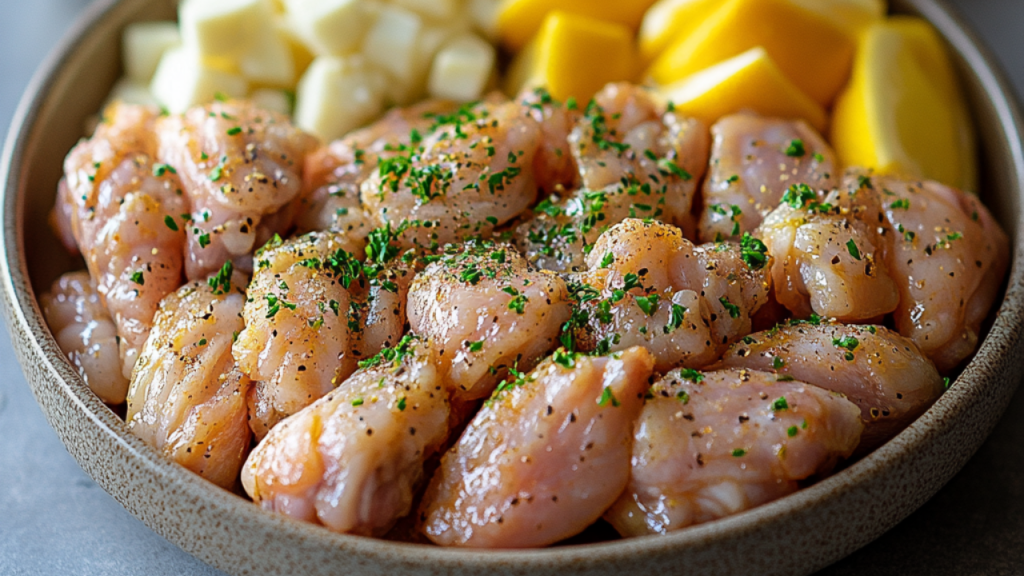
Air fryer chicken wings are incredibly versatile, and there are numerous ways to tailor the recipe to suit your taste. Here are a few creative ideas to consider:
Classic Buffalo Wings
- Ingredients:
Use a mix of salt, pepper, garlic powder, and a sauce made by combining your favorite hot sauce with melted butter. - Method:
After cooking the wings as described above, toss them in the warm sauce until evenly coated. Serve with celery sticks and your preferred dipping sauce.
Garlic Parmesan Wings
- Ingredients:
Combine salt, pepper, garlic powder, melted butter, minced garlic, and grated Parmesan cheese. - Method:
After air frying, gently toss the wings in a blend of melted butter and garlic. Sprinkle generously with Parmesan cheese and garnish with chopped parsley.
Sweet and Spicy Barbecue Wings
- Ingredients:
Season the wings with salt, pepper, and smoked paprika. Prepare a sauce by mixing barbecue sauce with a small amount of honey or brown sugar. - Method:
Cook the wings as usual, then toss them in the sweet and spicy sauce for a delightful combination of flavors.
Asian-Inspired Wings
- Ingredients:
Create a marinade using soy sauce, minced ginger, garlic, and a touch of sesame oil. Optionally, add a pinch of red pepper flakes for heat. - Method:
Marinate the wings for at least 30 minutes before cooking. After air frying, sprinkle with sesame seeds and chopped green onions for an extra burst of flavor.
Dry Rub Wings
- Ingredients:
Develop a dry rub by combining chili powder, cumin, smoked paprika, garlic powder, salt, and pepper. Optionally, finish with a squeeze of lime juice. - Method:
Coat the wings evenly in the dry rub prior to cooking. The result is a wing that is flavorful without the need for additional sauce.
Nutritional Insights
Air Frying vs. Deep Frying
One of the biggest differences between air fryer chicken wings and traditionally deep-fried wings is the amount of oil used. In deep frying, wings are fully submerged, leading to a significant absorption of oil. In contrast, air frying requires only a minimal amount of oil, resulting in lower overall fat and calorie content. This makes air-fried wings a more diet-friendly option without sacrificing the essential flavor and crunch.
Health Benefits
- Lower Fat Intake:
Air frying drastically reduces the amount of oil needed, which means each wing is lower in fat—a key benefit for anyone monitoring their fat consumption. - Fewer Calories:
With less oil, the calorie count per serving is reduced, allowing you to enjoy a larger portion without overindulging. - Nutrient Retention:
The quicker cooking process in an air fryer helps preserve the natural nutrients in the chicken, ensuring that you still receive a high-quality source of protein and essential vitamins.
Dietary Flexibility
Air fryer chicken wings can easily fit into a variety of dietary plans. Whether you are following a low-carb, high-protein, or even a gluten-free diet, these wings provide a versatile option that can be customized to meet your nutritional needs without compromising taste.
Expert Tips and Troubleshooting
Achieving Optimal Crispiness
- Thorough Drying:
Before seasoning, make sure to pat the chicken wings dry thoroughly. Excess moisture can lead to steaming instead of crisping. - Single Layer Cooking:
Arrange the wings in a single layer in the air fryer basket. Overcrowding will restrict airflow, resulting in less crispiness. - Mid-Cooking Flip:
Turning the wings halfway through the cooking cycle ensures even browning on all sides.
Experimenting with Seasonings
- Custom Blends:
Feel free to adjust the seasoning blends to suit your personal taste. Experiment with different herbs, spices, and even citrus zest for a unique twist. - Marinating:
For deeper flavor, marinate the wings for a couple of hours before cooking. A simple marinade with lemon juice, garlic, and herbs can make a significant difference.
Common Issues and Solutions
- Soggy Wings:
If your wings are not as crispy as you’d like, double-check that they are completely dry before adding oil and seasonings. Also, verify that the air fryer is preheated and that you are not overcrowding the basket. - Uneven Cooking:
Some air fryer models may cook unevenly. If you notice one side browning faster, try rearranging the wings halfway through the cooking process or reducing the batch size. - Adjusting Cook Time:
Wing sizes and air fryer models vary. Use a cooking thermometer to ensure the wings have reached the safe internal temperature of 165°F (74°C), and adjust the cook time if necessary.
Serving and Presentation Ideas
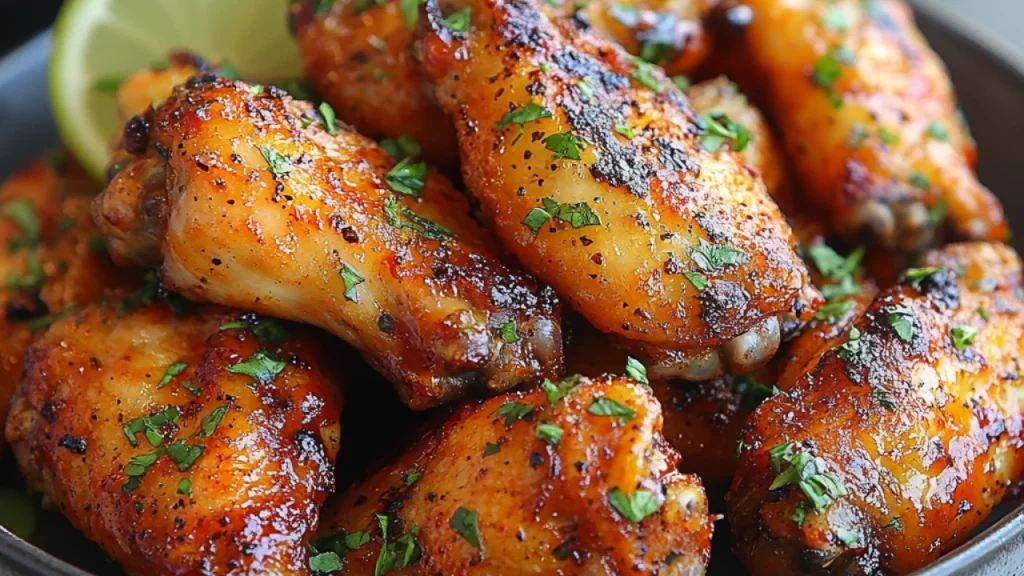
Garnishing
For an attractive presentation, consider garnishing your air fryer chicken wings with freshly chopped herbs such as parsley, cilantro, or green onions. Not only does this add a burst of color, but it also enhances the overall flavor profile.
Accompaniments
Pair your wings with a selection of dipping sauces. Traditional options include blue cheese and ranch dressings, but you might also try a tangy salsa, a homemade spicy mayo, or even a light vinaigrette. Fresh celery or carrot sticks not only complement the dish but also add a refreshing crunch.
Plating
Present the wings on a large platter that allows the vibrant colors and textures to stand out. If serving at a gathering, provide small bowls for each dipping sauce to encourage a communal dining experience.
Frequently Asked Questions
What makes air fryer chicken wings a healthier option compared to deep-fried wings?
Air fryer chicken wings require significantly less oil than deep-fried versions. This reduction in oil leads to lower calorie and fat content while still producing a satisfying crispiness. Additionally, the quicker cooking process helps to preserve more of the natural nutrients in the chicken.
Can I cook frozen chicken wings in an air fryer?
Yes, frozen chicken wings can be cooked in an air fryer. However, for more even cooking and optimal crispiness, it is generally best to thaw the wings beforehand. If you choose to cook them frozen, be prepared to extend the cooking time slightly and always check that the internal temperature reaches at least 165°F (74°C).
How can I ensure my wings are extra crispy?
To achieve extra crispy wings, make sure to pat the wings dry before seasoning, arrange them in a single layer without overcrowding, and flip them halfway through the cooking process. Preheating your air fryer also helps achieve a crispy exterior.
Are there any specific seasoning recommendations for air fryer chicken wings?
A versatile starting point is to use a simple blend of salt, pepper, garlic powder, and paprika. From there, you can experiment by adding cayenne pepper for heat, smoked paprika for a deeper flavor, or even a dry rub that includes cumin and chili powder. Tailor the blend to your personal taste.
Can I prepare the wings ahead of time?
Yes, you can prepare the wings in advance by seasoning them and storing them in the refrigerator until you are ready to cook. However, for the best texture, it is recommended to cook them fresh and then toss in any sauces immediately after air frying.
Conclusion
Air fryer chicken wings represent a modern, healthier twist on a traditional favorite. By utilizing an air fryer, you can enjoy the irresistible crispiness and rich flavors of well-made wings without the extra calories and fat associated with deep-frying. This comprehensive guide has taken you through the journey of understanding the evolution of chicken wings, the benefits of air frying, and detailed, step-by-step instructions to ensure your wings turn out perfectly every time.
We have also shared creative variations and expert tips to help you experiment with different flavors and textures. Whether you prefer classic Buffalo-style wings, a garlic Parmesan twist, or an inventive Asian-inspired version, the air fryer method offers the flexibility to create a dish that fits your personal taste and dietary needs.
Remember, the key to success is in the preparation—start with thoroughly dried and well-seasoned wings, preheat your air fryer, and arrange the wings properly to allow for even cooking. With these guidelines and the creative ideas provided, you will be well on your way to making air fryer chicken wings that are as healthy as they are delicious.
Thank you for exploring this guide on air fryer chicken wings. We hope it inspires you to try new recipes, adapt the techniques to your own style, and share your culinary successes with friends, family, and fellow cooking enthusiasts. Enjoy the process, and savor every crispy, flavorful bite of your homemade wings.

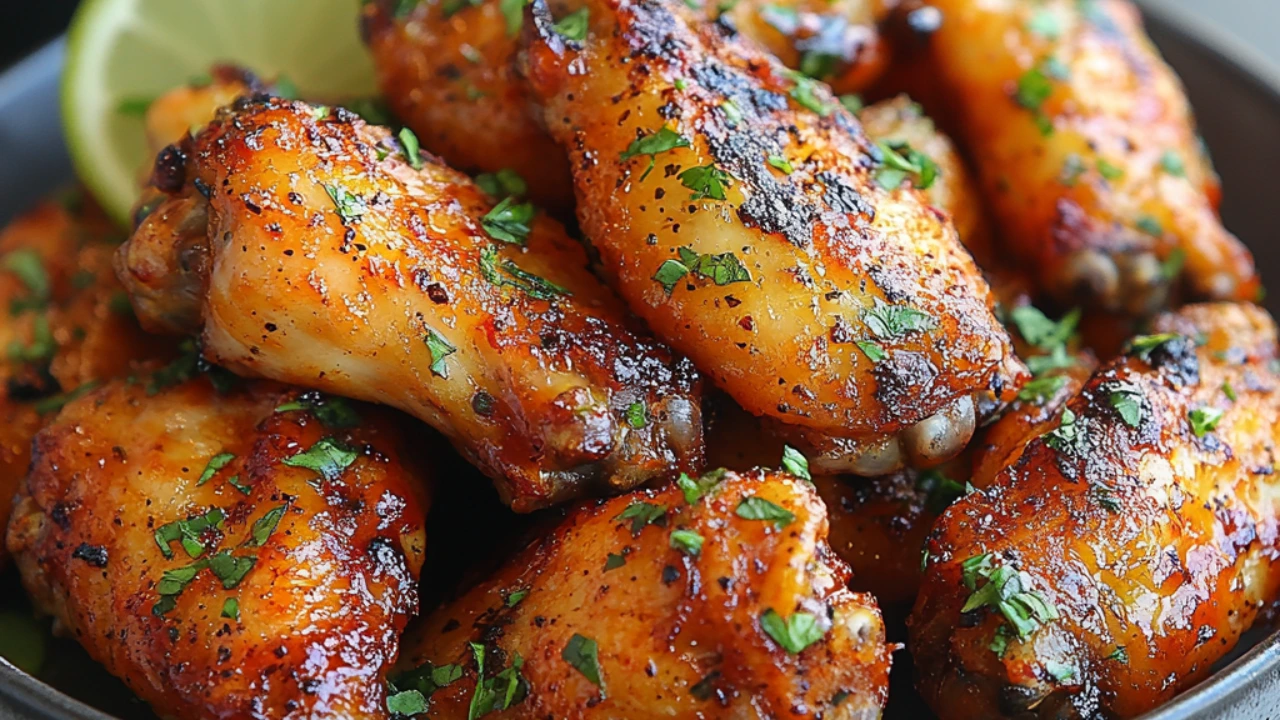
3 thoughts on “Air Fryer Chicken Wings: A Complete Guide to Healthier, Crispy, and Flavorful Wings”